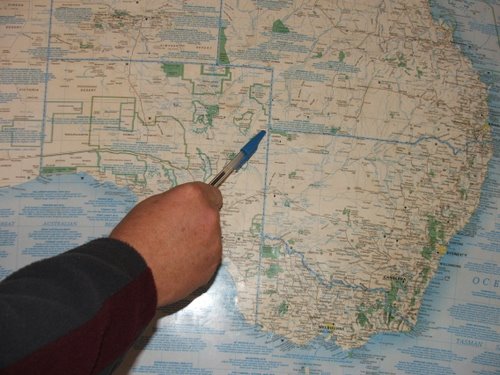Planning a 4WD Trip Around Australia in 5 Easy Steps
How to plan a big trip may be daunting – but essentially can be broken down to a few simple steps.
Working out where approximately you want to go is one of the first things to do. If your list only extends to a quick trip down the coast from Cairns to Sydney, then you don’t need a 4WD. Its probably best to understand this before you buy one! Although urban 4WDs are common in Australian cities as elsewhere, its absolutely beyond me as to why you want to own something which is expensive to run, hard to get around a parking building in and is much easier to roll-over in an accident than a conventional car.
Step 1 Shortlist
So step one is list out the key places you want to see. A theme might help some possibilities are:
-
the ultimate wine trail e.g. Hunter Valley, NSW; Rutherglen, Vic; Barossa Valley SA; Margaret River, WA
-
the geographic extremes: northern point, (Cape York, Qlds) southern point (Cockle Creek, Tasmania) eastern point (Byron Bay, NSW) western point (Denham, WA), highest point (Mt Kosciusko, NSW) and lowest point (Lake Eyre, SA)
-
the big lap – right around the coast or as close as the road will take you – about 30,000km in total.
-
Gorgeous scenary: Kings Canyon NT, Karajini National Park, WA, Mungo National Park, NSW, Franklin River, Tasmania
-
Great diving/snorkelling spots including the Great Barrier Reef, Whitsundays, Qlds, Shark Bay, WA, Exmouth, WA
-
Iconic outback destinations: Birdsville, Qlds, Gibb River Road, WA, Cape York, Qlds, Broken Hill, NSW, Longreach, Qld
Step 2 Route Planning
Now put those places on a map and draw a line between them – you may find that you have to go a bit out of your way to keep that line on any sort of road. You need to make some sort of guess as to whether there is any fit with the time you have available. Be aware that if you only have 6 months, you may not have time to see the whole country. We found that anything more than 500km a day was a very long day.
Step 3 Timing
Next step is to consider the weather. The weather in Australia is extreme, going to the northern tropical areas in the summer i(Nov-Mar) sn’t just silly its a waste of time if you want to drive the dirt road to Cape York – it will closed because of flooding and you shouldn’t drive on closed roads because a) if caught you will face significant fines for the damage you have caused and b) if you are not caught you might well die out there. Also a shade temperature of 50C isn’t unusual in the centre of Australia – your life expectancy during the day without water is about 1hr. Engine oils don’t work as well either in those temperatures so its rough on you and the vehicle. So avoid the northern tropics and central deserts between October and April, but these are good times to see the cooler states of Victoria, coastal NSW and the SW of WA including Perth. North of Mackay you cant swim from the shore during the stinger season which is approximately Nov to April (you can swim from off-shore islands and dive or snorkel the Great Barrier Reef which is well off-shore).
Step 4 Initial Plan Developed
So combining your must-sees, with your time frame and starting date that should give you enough of a plan to at least book your flights and decide where to fly into and out of. Of course at the end of trip the plan is always a bit of a laugh to look back on and see how far from reality it actually turned out to be so I would labour it on a day to day basis. We found in practice we had a general direction worked out and but our speed of travel often varied based on how interested we were in the area, what the weather was doing, and our general desire to go somewhere else.
Step 5 Execute
Go do it – but if you check our trip page you will see it doesn’t always go to plan – but that’s another post!
What’s your experience of travel planning – leave a comment I’d love to hear from you!
